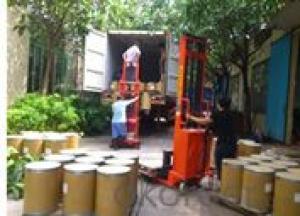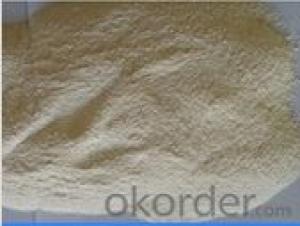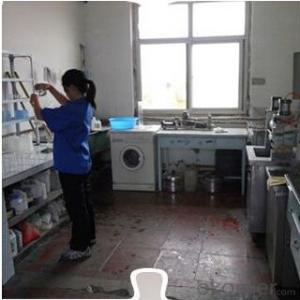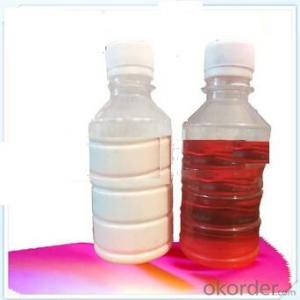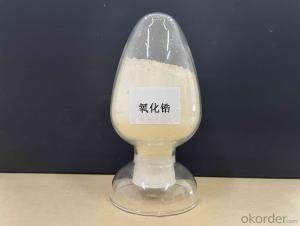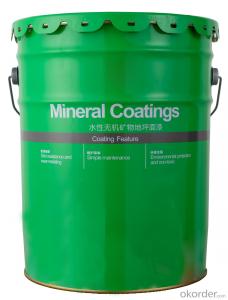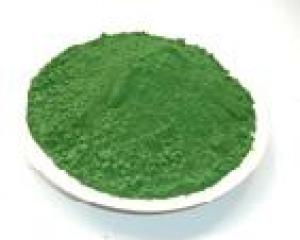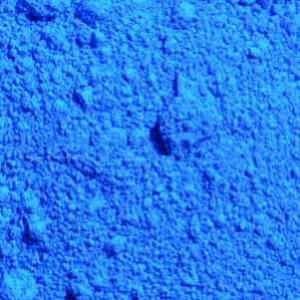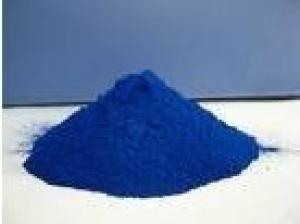textile chemicals from china manufacturer anionic polyacrylamide
- Loading Port:
- Shanghai
- Payment Terms:
- TT OR LC
- Min Order Qty:
- 1 bottle
- Supply Capability:
- 10000 bottle/month
OKorder Service Pledge
OKorder Financial Service
You Might Also Like
1. Product characteristics Anionic polyacrylamide(APAM)series products are water-soluable linear polymers synthesized under high degree polymerization,easily soluble in water,almost insoluble in benzene,ether,aliphatics,acetone and other common organic solvents .at the meantime,APAM series products also have valuable properties like flocculation,thickening,shear property,drag-reduction and dispersibility.thus widely used in oil recovery, mineral processing,coal washing,metallurgy,chemicals,paper,textile,suger,medicine,environmental protection,building materials,agriculture and other industtries.
| |||||
2. Quality index | |||||
Appearance | Solid content(%) | Hydrolysis degree (%) | Molecular weight (million) | Residual monomer content (%) | Dissolution time(hr) |
RTFLOC A20** | ≥89 | 6-45 (ADJUSTABLE) | 5-25 (ADJUSTABLE) | ≤0.05 | ≤1 |
3. Application (1)Displacement agent for tertiary recovery of oilfield. It can adjust the rheology of water injection,increase the viscosity of fisplacing liquid,improve the spreading efficiency of liquid displacement ,bring down the water permeability in strata and keep water and oil to flow at a constant speed.it is mainly used in tertiary recovery of oilfields.injection of each ton of PAM products can help to gather 100-150 tons extra crude oil. (2)Drilling mud material. Used as drilling mud additives in oilfield exploration and development and geology,water conservacy and coal exploration.i can prolong the bit’s life,raise the drilling rate and drilling footage,reduce the time of exchange drills.it has abvious effect in avoiding well collapse.it can also be used as oilfield fracturing fluid and profiling water blocking agent. (3) Industrial wastewater treatment. Especially for the treatment of wastewater containing suspendent particles which is coarse,high concentration and with positive charges and water’s PH value is neutral or alkaline.most effective for wastewater treatment of iron and steel plant,electroplate factory,metallurgy and coal washing. (4)Drinking water treatment. Many water plants in China come from river water,which contains large sum of sediment and mineral,very turbid.after precipitation and filtration,it still can not meet the requirements.flocculant is needed.water plants used to use inorganic flocculants.but large additive amount is required which caused the increase of sludge volume,not effective.use anionic PAM flocculants,with 1/50 additive amount that of inorganic flocculants,several times and even dozens of times effectiveness obtained than that of inorganic flocculants.for those organic polluted river water,better effectiveness can be achieved while mixed used together with cationic PAM. (5)Papermaking additives. Can be used for caustic soda’s clarification.used as retention aid,filter aid,reinforcing agent for wet and dry paper. (6)Clarifying agent in sugar refining industry. (7)Additives and adhesives in aquatic product feedstuff. | |||||
4. Instruction for use (1)It's very important to make the efficient dispersion during using, otherwise will cause agglomerate and "fish eyes", dissolving time will be longer. (2)Low-hardness water for use; avoid adopting such tank or pool, which will influence on water quality. (3)Improve the water temperature to accelerate the dissolving velocity, but not exceed 50. (4)Stirring will accelerate dissolving, but tough stirring will make the dispersant chain broken and degradation. Shipshape agitator with 200 - 500 rpm is the best choice. (5)Commonly mix the product into 0.05%--0.5%(w/w)solution as reserve. (6)Adjust the optimum dosage of product according to application condition. | |||||
- Q:what is pigment dispersion syndrome?
- Pigment dispersion syndrome (PDS) is an affliction of the eye that, if left untreated, can lead a form of glaucoma known as pigmentary glaucoma. It takes place when pigment cells slough off from the back of the iris and float around in the aqueous humor. This is not what causes problems; however, if the pigment flakes clog the trabecular meshwork, preventing the liquids in the eye from draining, pressure can build up inside the eye. This pressure can cause permanent damage to the optic nerve. This condition is rare, but occurs most often in Caucasians, particularly men, and the age of onset is relatively low: mid 20s to 40s. Most sufferers are nearsighted. There is no cure as of yet, but PDS can be managed with eye drops or treated with simple surgeries. If caught early and treated, chances of glaucoma are greatly reduced. Sufferers are often advised not to engage in high-impact sports such as long-distance running or martial arts, as strong impacts can cause more pigment cells to slough off
- Q:Can you take any powder, grind it finely, and mix linseed oil into it to make oil paints to make paint? Or do paint pigments have to have special characteristics? Thanks!!
- Pigments are specific minerals found in rocks. Then they are ground down and mixed with the binders for oil, acrylic, and watercolor paints. You can take art classes that teach you how to make your own paints. I have a cousin who hikes to find her own pigments and makes all the colors she paint with. If you'd like something less labor-intensive, you can buy the pigments you want from lots of art stores these days. They can be added to pre-existing colors to enhance them, or you can start from scratch to formulate your own colors. The bottles i've seen are around 8 ounces, and cost about $50. You will likely find books in the library and articles online that will help you learn to make your own pigments.
- Q:what are accessory pigments?
- Accessory pigments are light-absorbing compounds, found in photosynthetic organisms, that work in conjunction with chlorophyll a. They include other forms of this pigment, such as chlorophyll b in green algal and higher plant , while other algae may contain chlorophyll c or d. In addition, there are many non-chlorophyll accessory pigments, such as carotenoids or phycobiliproteins which also absorb light and transfer that light energy to photosystem chlorophyll. Some of these accessory pigments, particularly the carotenoids, also serve to absorb and dissipate excess light energy, or work as antioxidants. The different chlorophyll and non-chlorophyll pigments associated with the photosystems all have different absorption spectra, either because the spectra of the different chlorophyll pigments are modified by their local protein environment, or because the accessory pigments have intrinsic structural differences. The result is that, in vivo a composite absorption spectrum of all these pigments is broadened and flattened such that a wider range of visible and infrared radiation is absorbed by plants and algae. Most photosynthetic organisms do not absorb green light well, thus most remaining light under leaf canopies in forests or under water with abundant plankton is green, a spectral effect called the green window. Organisms such as some cyanobacteria and red algae contain accessory phycobiliproteins that absorb green light reaching these habitats. For more kindly click on the links below --- en.wikipedia.org/wiki/Accessory_p... en.wikipedia.org/wiki/Photosynthe...
- Q:are photosynthetic pigments separated based on their polarity or based on their molecular structure?Thanks
- Molecular structure... Chlorophylls are greenish pigments which contain a porphyrin ring. This is a stable ring-shaped molecule around which electrons are free to migrate. There are several kinds of chlorophyll, the most important being chlorophyll a. This is the molecule which makes photosynthesis possible, by passing its energized electrons on to molecules which will manufacture sugars. All plants, algae, and cyanobacteria which photosynthesize contain chlorophyll a. A second kind of chlorophyll is chlorophyll b, which occurs only in green algae and in the plants. A third form of chlorophyll which is common is (not surprisingly) called chlorophyll c, and is found only in the photosynthetic members of the Chromista as well as the dinoflagellates. The differences between the chlorophylls of these major groups was one of the first clues that they were not as closely related as previously thought. Carotenoids are usually red, orange, or yellow pigments, and include the familiar compound carotene, which gives carrots their color. These compounds are composed of two small six-carbon rings connected by a chain of carbon atoms. As a result, they do not dissolve in water, and must be attached to membranes within the cell. Carotenoids cannot transfer sunlight energy directly to the photosynthetic pathway, but must pass their absorbed energy to chlorophyll. For this reason, they are called accessory pigments. One very visible accessory pigment is fucoxanthin the brown pigment which colors kelps and other brown algae as well as the diatoms.
- Q:Hi what is pigment?i went on mac cosmetics and they sell all different kinds of stuff called pigment. I want to use it to make lip gloss but is it safe for my lips?please answer soon!
- Pigment is colour. :]
- Q:What does pigment mean?
- The natural coloring matter
- Q:If they are not the same, then what is the difference? Please help me out here.
- Yes, tannins are pigments but they aren't really the main plant pigment. Plant pigments usually refer to photosynthetic pigments (chlorophyll, carotenoids, etc.). These photosynthetic pigments give the leaves their green color (or yellow/orange in the fall). Tannins are non-photosynthetic phytochemical (involved in plant metabolism and internal functioning), but they are also a pigment. Tannins (and lignins) are brown. This is was gives dead leaves and wood their color. Tannins also leach out of the leaves when soaked in water (same process as brewing a cup of tea). So tannins are pigments when they leach out of leaves and stain water (or other things) brown, but they are not photosynthetic plant pigments. In other words, it depends on what context you are calling a tannin a pigment. In a live plant they are not a pigment (judgment call here). In a dead leaf or when they leach out of a leaf they are a pigment.
- Q:I want to find bright colored eye pigments much like macs. However I dont want to spend tons of money. Does anyone know of a place that sells inexpensive eyeshadow pigments?
- Go to Wal-mart or Target and look at their selections. A lot of cosmetic lines are now into making eye shadow pigments!!
- Q:Why do algae contain pigments other than just chlorophyll?
- they stay underwater...the water swollows easy in a definite sequence, so the deeper they stay the greater distinctive is the easy and that they elect different pigments than landplants.
- Q:Know this ounds kinda obvious but just wanted to confirm, is there more pigment in the middle of the beetroot than on the edges?
- I've known it to be in the skin and thats from a cooking point of view.
1. Manufacturer Overview |
|
|---|---|
| Location | |
| Year Established | |
| Annual Output Value | |
| Main Markets | |
| Company Certifications | |
2. Manufacturer Certificates |
|
|---|---|
| a) Certification Name | |
| Range | |
| Reference | |
| Validity Period | |
3. Manufacturer Capability |
|
|---|---|
| a)Trade Capacity | |
| Nearest Port | |
| Export Percentage | |
| No.of Employees in Trade Department | |
| Language Spoken: | |
| b)Factory Information | |
| Factory Size: | |
| No. of Production Lines | |
| Contract Manufacturing | |
| Product Price Range | |
Send your message to us
textile chemicals from china manufacturer anionic polyacrylamide
- Loading Port:
- Shanghai
- Payment Terms:
- TT OR LC
- Min Order Qty:
- 1 bottle
- Supply Capability:
- 10000 bottle/month
OKorder Service Pledge
OKorder Financial Service
Similar products
New products
Hot products
Related keywords
